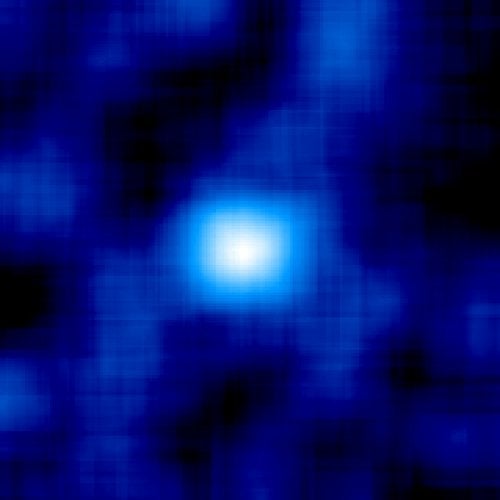A faint gathering of stars detected on the fringes of the Milky Way Galaxy may be the least-luminous dwarf galaxy ever found — or it could be one of the most unusual globular clusters known. Astronomer Beth Willman of New York University (NYU) led a team that used data from the Sloan Digital Sky Survey (SDSS) to find the mysterious object.
Michael Blanton, a colleague of Willman’s at NYU, says that if the object isn’t a galaxy, the best alternative is an unusual kind of globular cluster. But even that may be a stretch. “It’s dimmer than all but three globulars we know about,” he says, “and, moreover, those dim globulars are more compact than Willman 1.”
Astronomers are finding the outskirts of nearby galaxies are good hunting grounds for low-luminosity objects, and the Sloan Survey, in particular, is efficient at picking them out. In June 2004, another SDSS team, led by Daniel Zucker of the Max Planck Institute for Astronomy in Heidelberg, Germany, reported finding a faint galaxy orbiting the Andromeda Galaxy (M31).
These searches bear on the question of how much dark matter surrounds galaxies. Dark matter is the catchall name for unseen material whose gravity keeps galaxies (and galaxy clusters) together. Dark matter’s nature is debated, and it may include exotic subatomic particles.
The prevailing model for dark matter suggests that hundreds or thousands of dark-matter clumps surround the Milky Way. Each clump might contain a dwarf galaxy and could span a few hundred light-years. Yet astronomers know of only 11 dwarf galaxies attached to the Milky Way. Why they haven’t found more poses a puzzle.
One possible explanation is that most of the dark-matter clumps contain few stars, which would make them difficult to discover. The newly discovered object, SDSSJ1049+5103, lends support to this idea and hints that astronomers should keep looking.
Says Willman, “If the new object is, in fact, a dwarf galaxy, it may be the tip of the iceberg of a yet-undetected population of ultra-faint dwarf galaxies.”










